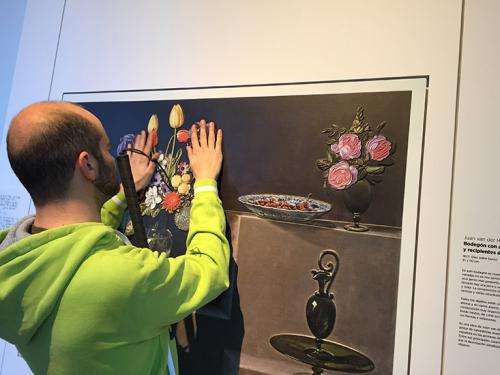March 12, 2015 weblog
A 'touching' exhibition opens up art for blind visitors

Imagine making art come alive with touch. The Prado aims to make art within reach for people who are blind. In a video, Ruben, who went blind in his 20s and is now in his 30s, tells viewers that Estudios Durero, a Spanish group focused on image and digital reproduction processes, called him. They were working on a project of images for the blind with the Prado and they asked him to help. The effort involved a "relief printing" technique that manages to reproduce images for touching.
This technique opens up a new world of connecting with images through touch, a process which enables the blind to utilize touching to see. Volume, texture, shape take on special meaning when seeing in one's mind the mountains, chairs, clothing, faces and poses in art masterpieces. Ruben said, "My fingers are my eyes." The information they gather helps him to learn. He said it was the not the first time to visit the Prado Museum but it was the first time to go there after losing his sight.
Didú is the name of the relief printing technique. This is a methodology that was developed by Estudios Durero for the treatment and reproduction of relief images. They can turn a digital image into an image that can be touched. "Each image that we treat with Didú requires its own path. Personalized treatment based on studying the work and its artistic context, also conditioned by the need to be understandable to the blind." Personalization is an apt word. Raphael Minder in The New York Times, reporting on their work, described how they go about their work: "Starting with a high-resolution photo of the painting, employees at Durero select textures and features that make sense to enhance for the blind. Next, they create a print, with a special ink, and then use a chemical process to add volume to what would otherwise be a flat reproduction. As part of the chemical process, ultraviolet light is applied to the special ink, so that the print gains a few millimeters of volume while maintaining the colors of the ink," he wrote.
According to Estudios Durero, the technique "gives textures and relief of up to six millimeters to flat images. The process is developed from a high resolution photograph of the image. After this, we select the most suitable textures and volumes to guide the blind person's hands. In this aspect, small details, which may appear insignificant at first sight, can be fundamental in understanding the composition or the theme developed in each image." As Minder pointed out, some of the copies were downsized slightly from the original artwork to accommodate how far a visitor can comfortably reach the artwork.
The Prado began the exhibition in January this year, running until June 28. Estudios Durero said Didú was a project of continuous improvement. "We continue researching to develop and improve our technique."
More information: www.estudiosdurero.com/estudio … SIER_DIDU_ING_OK.pdf
© 2015 Tech Xplore





















